If you spend time in Eastern Slovakia, especially Košice, the second-largest city, you can easily explore its surroundings. Hájske Vodopády or Háj Waterfalls are only a 40-minute drive from the city between the village Háj and Hačava. They are part of the Slovak Karst National Park.
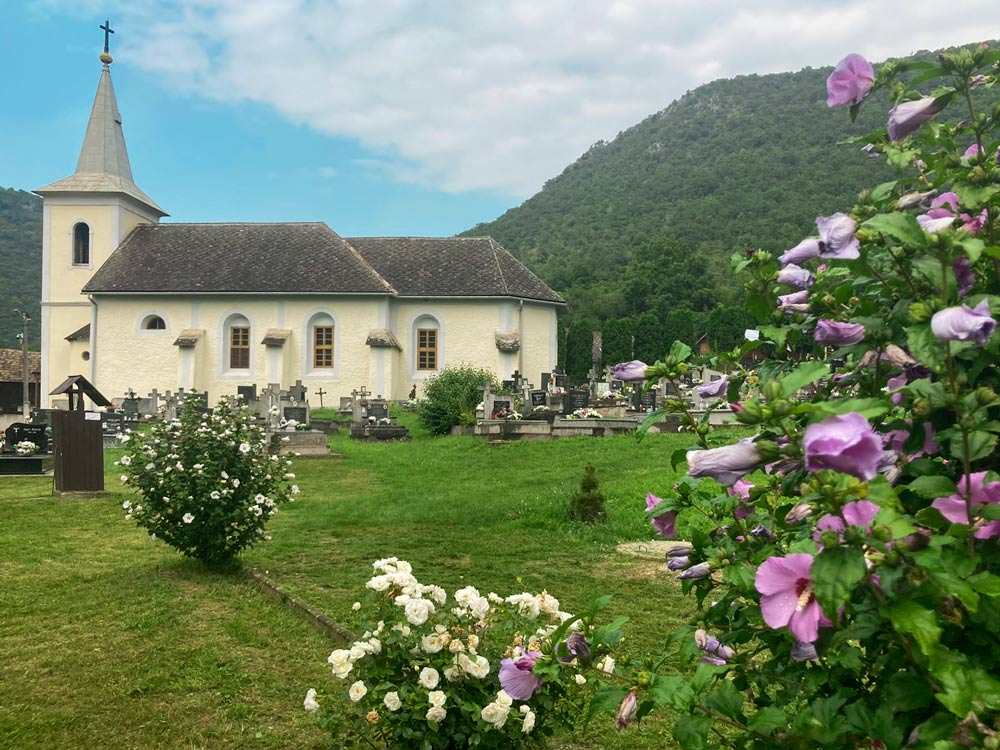
Location
Košice city is the nearest town to the Hájske Vodopády waterfalls. You can rent a car or take the local public transport (train) and head towards Turňa nad Bodvou. Then, turn north to the small village of Háj. Another option is to walk (1 hour from Turňa N. Bodvou) or take a local bus to its center.
Village Háj
It is worth to stop in this village. A lovely canal created by the stream Háj runs in the middle of it. Like other villages around the country, this one has some churches. One is the Reformed church, and the second is the Catholic Church. What is more interesting are the houses in the village. Especially the one called Veža na vlásku, or Rozprávková veža. It looks like it fell out of a fairy tale. You will notice it when coming near the end of the Háj where the waterfalls begin to appear. The only disadvantage is that the fairy tale tower is not open to the public. As I walked by, I saw no easy access to it. It appeared privately owned.
The village has many uniquely designed old houses, some of which have been renowned and are very intriguing. Among the notable landmarks are the traditional Palóc-style peasant houses, which feature original folk architecture elements typical of the region.
At the edge of the village near the waterfalls operates a small restaurant conveniently located on the main street.
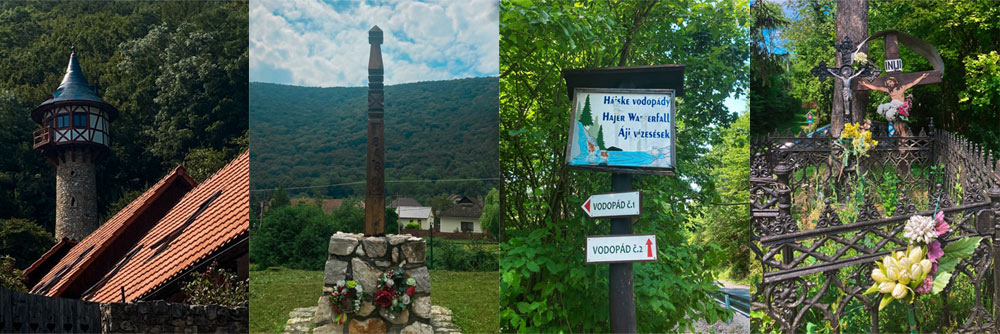
Angel Statue – film location
This attraction lies at the beginning of the Háj village in the churchyard. Some signs will lead you to this place. The cemetery is open daily from 8 am until 6 pm. There is also a parking lot nearby. The statue is a prop from an American war movie Behind Enemy Lines. The movie crew constructed the statue from polystyrene. Some parts look decayed over time. Right next to the statue lies the left wing. It is around 7 to 10 meters high.
You can see the shots of the statue at the beginning and end of the movie. Owen Wilson and Gene Hackman took on the lead roles in the blockbuster.
The film was shot in 2000. Interestingly, there was so little snow during the filming that all the snow in the scenes the crew created artificially. The film studio had workshops and snow-making equipment in the village of Háj. Additionally, nearly the entire town participated as extras in the film. It’s not surprising that the angel statue remained in this village. 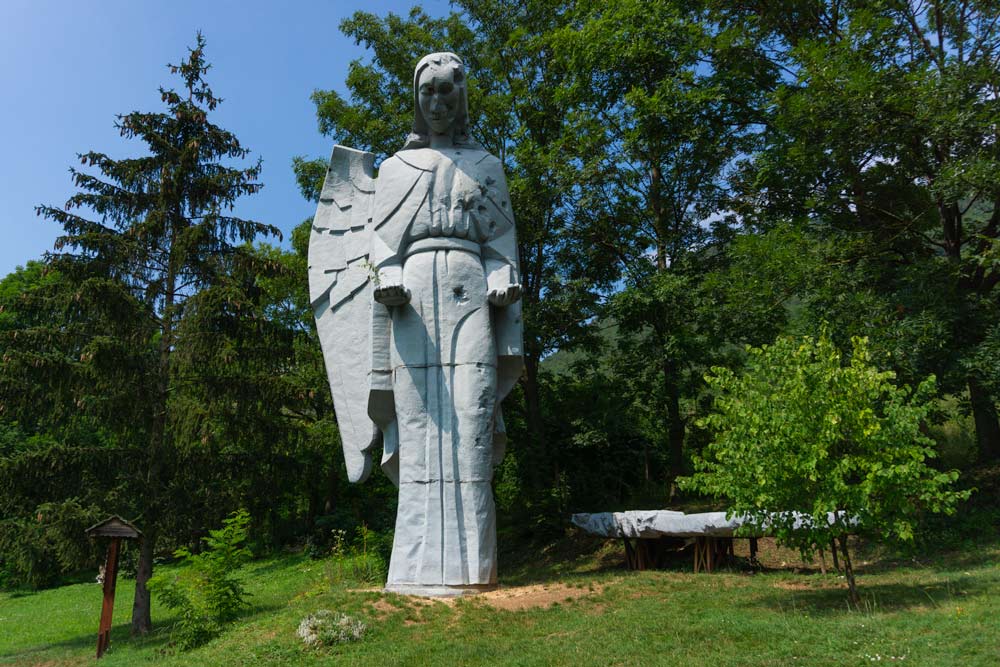
Hájske Vodopády
There are ten waterfalls. If you arrive from the village of Háj, go up a small hill. Then, you should see a sign on the left. It will show you where to enter the forest and find the first waterfall, Dolný Hájsky vodopád nad mostom (Below Háj Waterfall over the bridge). Suppose you are driving a car, drive further and stop at the second sign that leads to Veľký Hájsky vodopád (Big Háj Waterfall). There is a small parking lot.
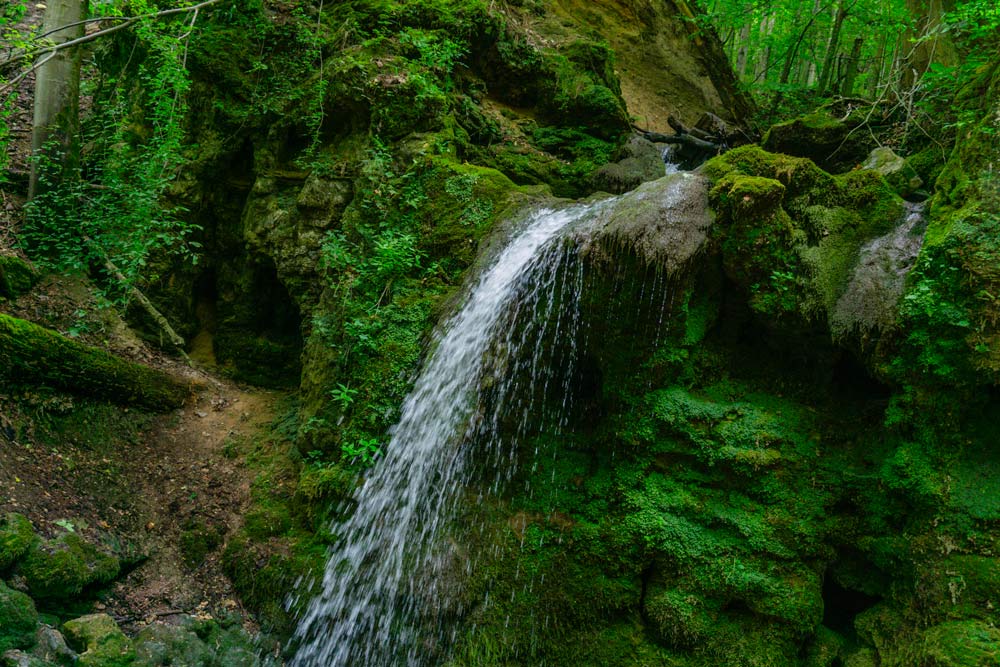
Hájske Vodopády waterfalls are not only the work of nature. There used to be people working in mines and quarries. The area is rich in travertine – limestone used for construction. The waterfalls are 1 to 7 meters high, and the valley is 6.5 kilometers long.
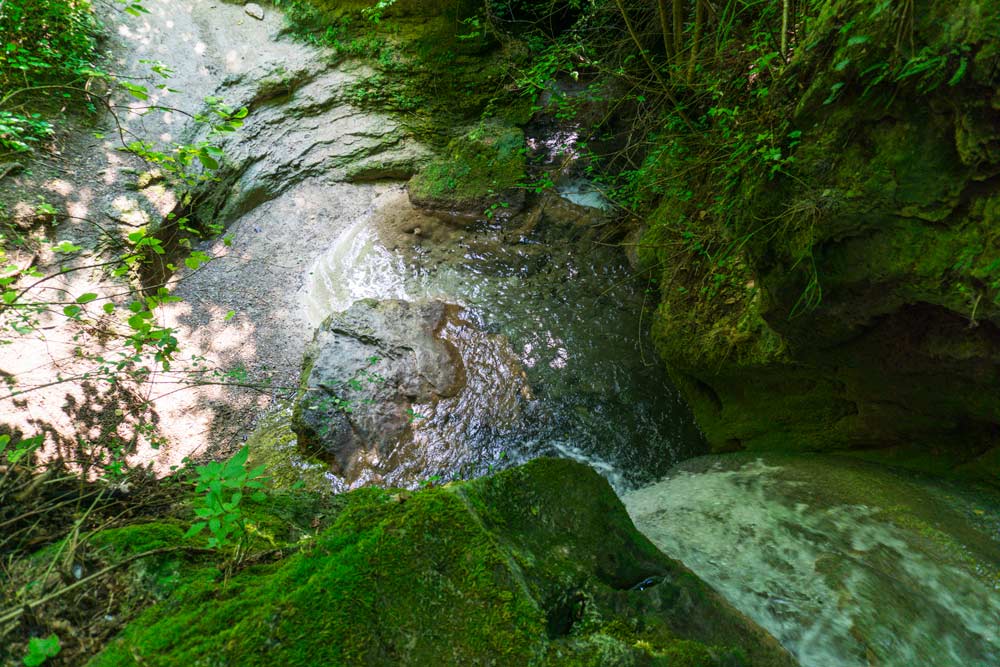
The valley was shaped by the Háj stream, with the waterfalls branching off from it. A well-known landmark in the area is the Devil’s Bridge, the narrowest section of the valley, measuring just 10 meters wide. The surrounding rock formations stretch between 100 and 150 meters in length. The valley also features several caves, including the Devil’s Cave, where you can explore remnants of old cave corridors.
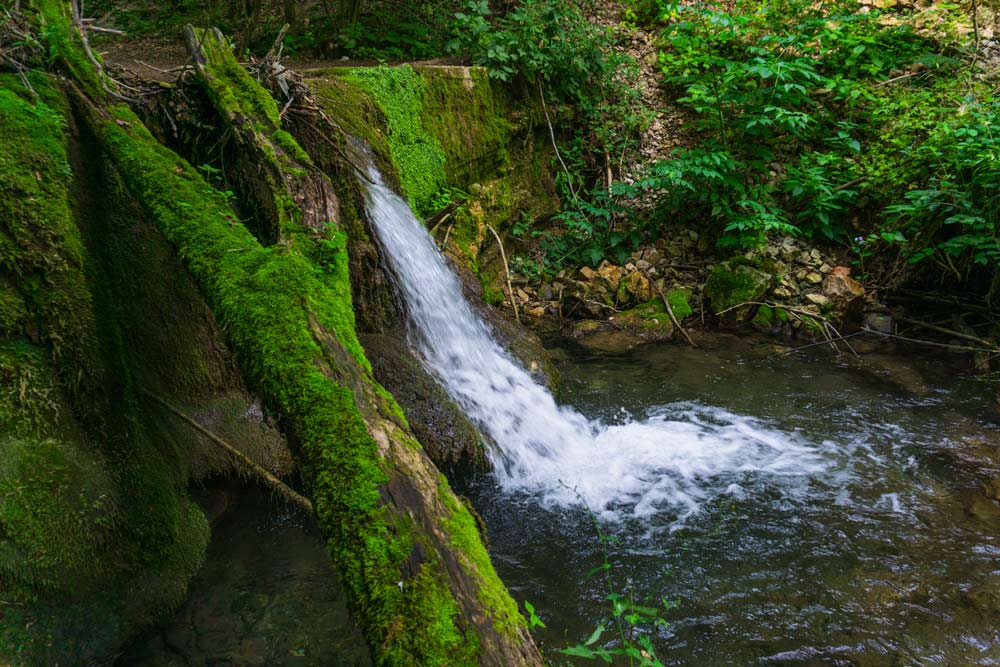
Reserve around 2 to 3 hours to explore Hájske Vodopády waterfalls fully. The amount of water in them depends on the amount of rain. If you decide to visit them, try to come after a rainy day or rainy period of the year. In the winter, they are adorned with ice walls and icicles.
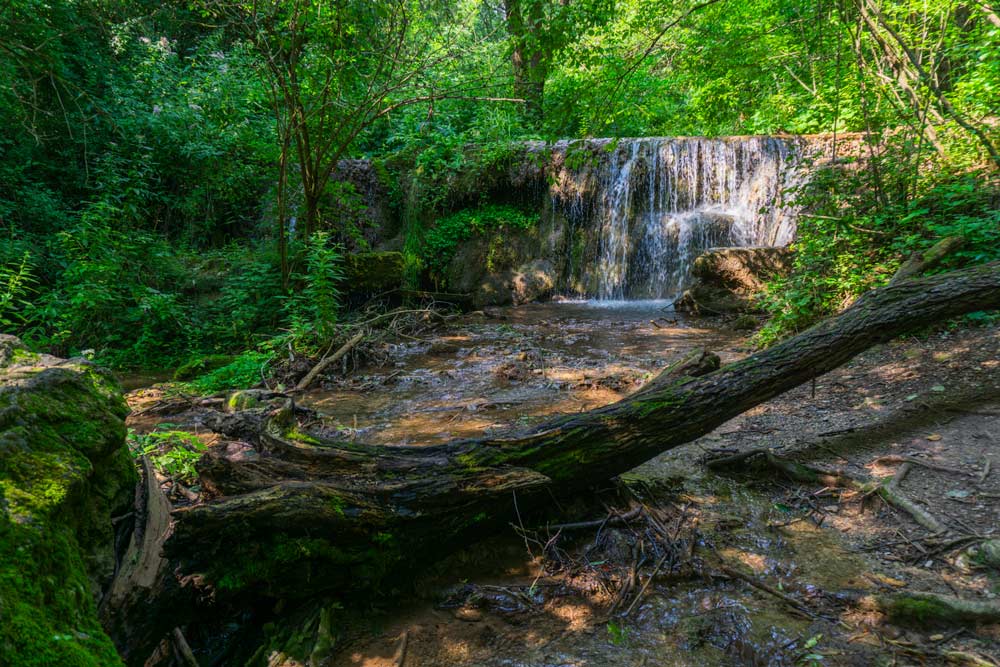
List of all Háj waterfalls
Dolný Hájsky – 5 meters
Hájsky Veľký most – 3.1 meters
Malá Hájska kaskáda – 2 meters
Hajský vodopád Malý most – 3 meters
Hájsky vodopádik – 1.5 meters
Kamenný žľab vodopádik – 1.4 meters
Smaragdový vodopád – 1.7 meters
Veľký Hájsky vodopád – 7 meters
Stredný Hájsky vodopád – 5.9 meters
Horný Hájsky vodopád – 5.3 meters
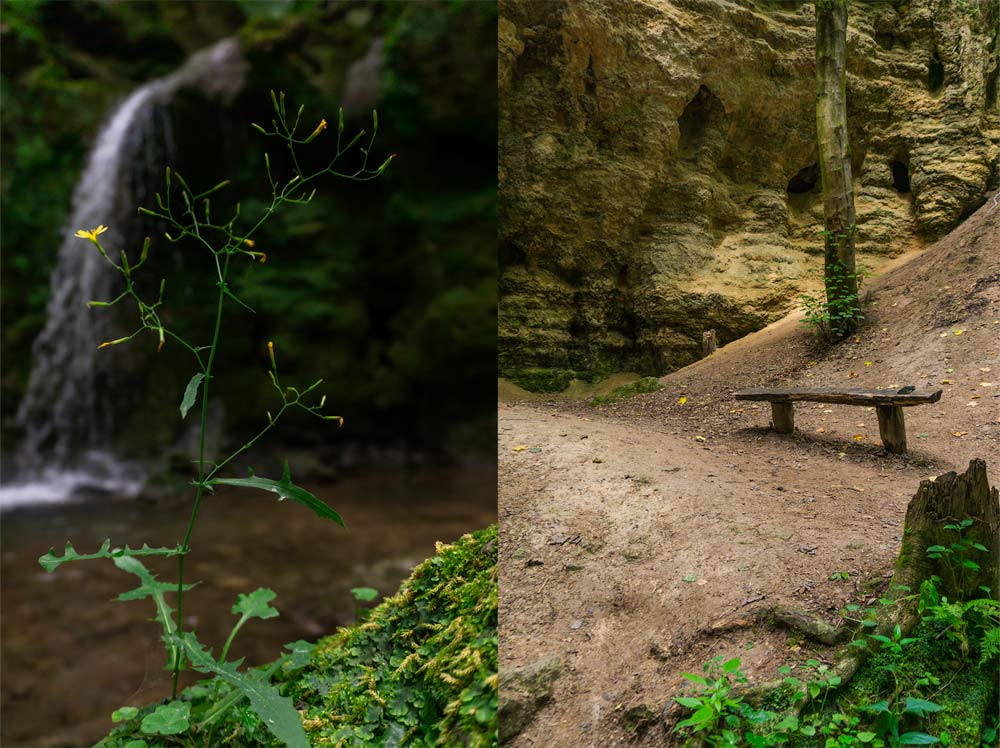
Great Háj Waterfall – Veľký Hájsky vodopád has a gazebo, benches, and fire pits, making it a perfect spot to rest and enjoy nature. There’s also a bench located near the Middle Háj Waterfall – Stredný Hájsky vodopád.
A yellow hiking trail and a red cycling trail run directly through the Háj Valley, connecting the village of Háj to Hačava. Despite the elevation gain of about 400 meters between the two villages, the route toward Hačava is easy, with a gentle incline. It is suitable for hikers of all levels, including families with children.
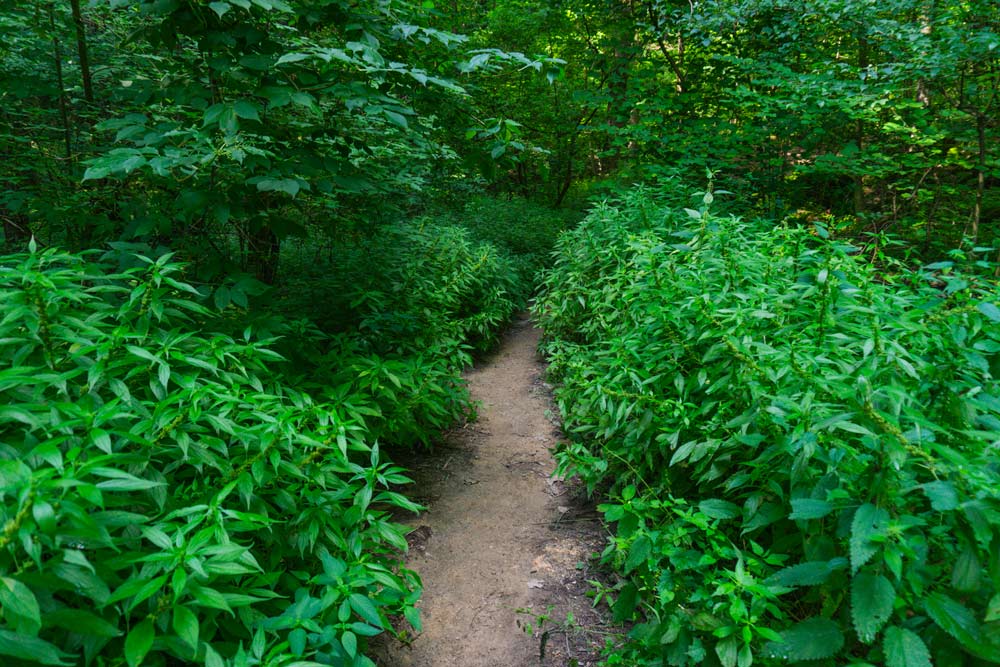
Nearby attractions and accommodation
Hačava is a quaint village renowned for its distinctive traditional architecture. If you prefer hiking, you can explore the nearby Turňa Castle or the stunning Zádielska Gorge.
Zádielska Gorge, or Zádielska tiesňava, is a natural marvel in the Slovak Karst. The place has dramatic rock formations, towering cliffs, and lush vegetation. The gorge offers a range of hiking trails suitable for various skill levels.
Turňa Castle, located near the village of Turňa nad Bodvou, is a historic site with a rich past. The castle dates back to the 13th century. People built it for defensive purposes. Although it has undergone several renovations and restorations over the centuries, parts of the castle still reflect its medieval origins, including the remnants of its fortifications and towers.
For an extended stay, consider booking a few nights at Penzión Réva, a guesthouse in Turňa nad Bodvou.
To the west, in the village of Lúčka, you can visit the well-preserved ruins of a medieval Hussite church. This church, built in the early Gothic style, includes a newly constructed observation tower with battlements and a stone defensive wall added by the Hussites. The tower is the most well-preserved part of the church. Fire destroyed the church during World War I, and no repairs were ever made. The remaining structure suffered further damage during World War II.
Further away
After visiting the Hájske Vodopády waterfalls, you can also take a short trip further to discover the stunning Šikľavá Skala, a remarkable site that looks especially beautiful in winter. For more on this breathtaking natural site, check out my article Šikľavá Skala: Slovakia’s Stunning Ice and Waterfall Phenomenon.
Sources:
planetslovakia.sk
slovensky-kras.eu
trekhunt.com